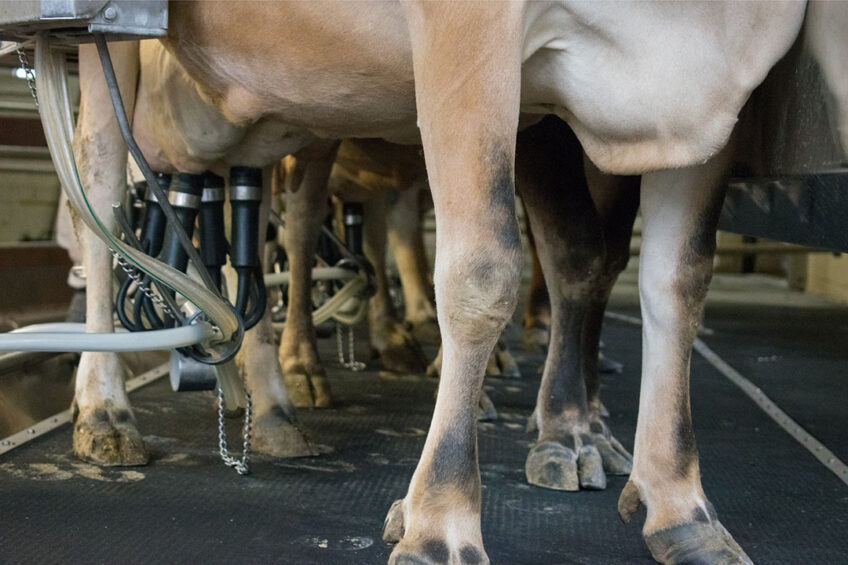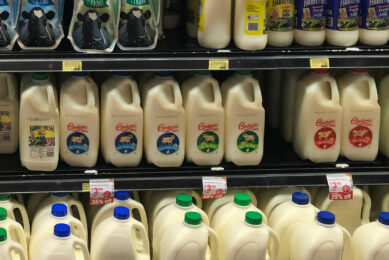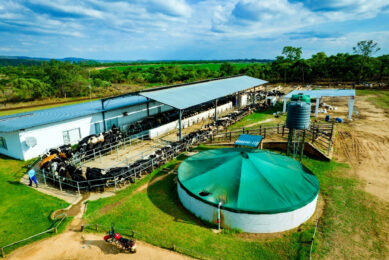Zimbabwe and Belarus cement dairy farming ties

A delegation of senior government officials from Belarus, a significant dairy producer, was recently in Zimbabwe to discuss the establishment of multi-million dollar joint milk powder processing projects in the southern African nation.
The main focus of the anticipated projects will see Belarusian food and joint companies establishing state-of-the art milk processors which will process the product into whole milk products and powder.
The Belarus delegation was led by deputy prime minister Leonid Zayats who met Zimbabwe President Emmerson Mnangagwa and other senior government ministers and officials.
The visit was a follow-up to an earlier meeting between the 2 governments and their respective presidents, Mnangagwa and Belarus President Alexander Lukashenko held in Minsk early this year where host country was requested to come to Zimbabwe and established milk processing facilities.
Investments and new dairy technologies
In return, Belarus officials assured their counterparts that there were a number of milk processing companies that were ready to invest in Zimbabwe. Belarus boasts new technologies for production, processing and marketing of dairy products.
“As a result of the agreement between the presidents of our countries Zimbabwe and Belarus, we will work closely on economically profitable joint projects for the development of certain areas,” Zayats said during his recent visit to Zimbabwe.
“We discussed with the Zimbabwean delegation the organisation of supplies of Belarusian food and joint ventures for processing milk powder into whole milk products. We will also discuss beef and poultry processing,” he added. “There is a list of companies that are ready to cooperate with Zimbabwe, so we need to solve all the issues of cooperation as soon as possible. I would like to point out that we all need a reliable partnership.”
Igor Brylo, the Belarus agriculture minister, who was also part of the delegation, said his country counts on long-term cooperation in agriculture with the southern African nation. “We count on long-term cooperation. We will fulfil all agricultural mechanisation agreements with Zimbabwe. Our equipment has been in demand in your land and you saw a better yield. We can also offer our grain drying complexes. In addition, we could be useful to you in mechanising storage of vegetables and fruits – creating the temperatures that allow selling vegetables and fruits all year round,” he said.
Dairy cattle breeding and other dairy sector opportunities
According to Brylo, the parties should also increase mutual deliveries of goods. “There are food products that are produced in Belarus, but not produced in Zimbabwe and vice versa,” the minister noted. “Another important area of cooperation is the development of dairy cattle breeding in your country. You have a very favourable climate for this.”
Foreign and international trade minister, Fredrick Shava, said the meetings were a follow-up on deals signed between the 2 countries. “We have good relations and as you know we have embassies in each other’s country and we are pursuing issues in agriculture, especially in dairy. We think we can benefit from their technology. They have fantastic dairies in Belarus,” he said.
To boost dairy farming and production in Zimbabwe, Belarus and Zimbabwe have also launched the second phase of the farm mechanisation programme, and Zimbabwe took delivery of 1,300 tractors and 14 combine harvesters.
The first phase saw 474 tractors, 60 combine harvesters, 210 planters and 5 low-bed trucks being delivered to the country and distributed to farmers through the Land Bank.
According to an official at the Belarus Embassy in Zimbabwe, some of the companies that have shown an interest in investing in Zimbabwe are Bellakt, which produces milk porridges, powdered milk formulas for children, as well as Lidahleboproduct OJSC, which manufactures flour milling products and semi-finished flour products, and Smorgon Bakery.
“We estimate the total economic effect of the visit (to Zimbabwe) at approximately US$200 million,” the official said.
Zimbabwe agriculture minister, Anxious Masuka, confirmed his government’s commitment to the full implementation of the signed agreements in the field of agriculture and food production in order for the country to achieve food security. “We discussed the supply of agricultural machinery and equipment to from Belarus, the possibility of using advanced Belarusian experience and technologies in the creation of agro-industrial enterprises in Zimbabwe,” he said.
Zimbabwe deputy agriculture minister Vangelis Haritatos said the Belarussians were also paying particular attention to improving the operations of Dairibord Zimbabwe and other emerging players in the dairy industry in Zimbabwe.
Increase milk production
Last year, the dairy sector produced 91 million litres of milk against an annual demand of 130 million litres, and this year, it is targeting to increase production to at least 110 million litres of milk. “We are still about 20 million litres deficit and the Belarussians are willing to help us in our capacity building by assisting our farmers to improve genetics,” Haritatos said.
This comes as imports of milk powder have also declined from 8.9 million kg to 7.4 million kg over the same period. If the current milk production growth rate is maintained, Zimbabwe is confident of surpassing the national milk target requirement of 150 million litres by 2025.
The country was once a net exporter of milk and dairy products, producing over 260 million litres per year at its peak in the early 1990s.
Zimbabwe Association of Dairy Farmers chairperson Ernest Muzorewa says this year Zimbabwe expects a 20% increase in milk production from 91 million litres in 2022, to about 108 million litres.
“Until the recent increase, smallholder dairy farmers produced 3% of the country’s milk production. Markets for milk are strong but production systems are generally inefficient, with growth coming from increases in the number of cows rather than in milk production per animal,” Muzorewa said.
“The interventions are part of the country’s livestock recovery and growth plan with deliberate efforts to increase the national dairy herd from 19,000 in 2021 to 29,000 in 2022 including the government’s private sector funded dairy heifer programme,” he added.
Join 13,000+ subscribers
Subscribe to our newsletter to stay updated about all the need-to-know content in the dairy sector, two times a week.










